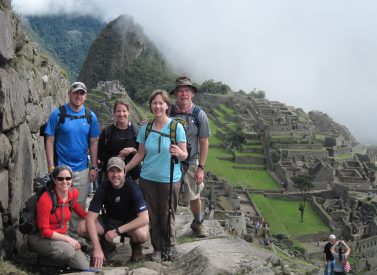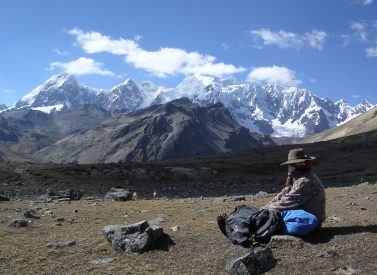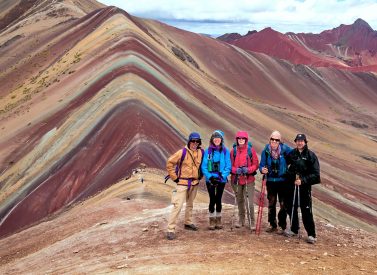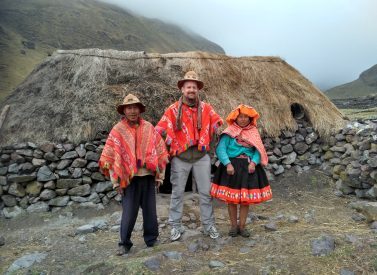
Ausangate Camping Trek
Take on one of Peru’s best treks with our 5-day, Ausangate camping trek.
This remote trail features hot-springs, stunning mountain scenery and turquoise lakes on one of the best high altitude walking trails near Cusco.
Ausangate is truly one of Peru’s finest hiking circuits, and we’ll be camping in some high and remote areas.
Expert guides will accompany us as well as pack animals, a cook and full support team.
More on Ausangate 5-day trek
You should be fully acclimatised before starting to walk as we will be camping in Altiplano well over 4,000m/13,123ft and crossing several passes at around 5,000m/16,404ft.
Our backdrop of snow-capped peaks and spectacular scenery accompanies us around the mystical Mount Ausangate (6,350m/20,505ft).
We walk among herds of llamas and alpacas in remote native Quechua villages and appreciate the colorful clothing and daily rhythm of the local inhabitants.
With three high passes over 5,000m, spectacular glacial views, and unmolested beauty and solitude, Ausangate is a superb trip for trekkers who love a true adventure.
With luck, we can spot numerous bird species, including Andean geese and the magnificent Andean Condor. We can vary the route if you wish to include the Rainbow Mountain trek.
Trip Highlights
Print Share Download as PDF-
Hike one of the most remote and rewarding treks near Cusco.
-
Walk among Andean villages of llama herders and farmers, where time seems to slow right down.
-
Beautiful views to some of Peru's most beautiful snow-capped peaks, glaciers and lakes.
-
Fantastic guides and support teams lead you on a life-affirming trek among nature.
-
Option to vary the route to include the Rainbow Mountain trek.
The Ausangate Trek was truly spectacular – to see no Westerners for 5 whole days, in fact to see barely a soul except for a few llama herders – well, I know that for all three of us, this was just one of the most mind-blowing and humbling experiences we’ve ever had.
It tells you all you need to know that on the last night, we tried to write a top 10 of our favourite moments and within seconds had filled a page with at least 20!
Everything just worked so perfectly, and the holiday was a fantastic combination of....trekking, wilderness, sightseeing, shopping, culture….just brilliant!
D. Waldron, Ausangate trek
Full Itinerary
Day 1: Drive Cusco - Upis, camp (L,D)
Early in the morning we depart Cusco in our private vehice and travel about three hours to the small Andean village of Tinqui, passing through several traditional villages such as Urcos, Cattca, and Ocangate along the way. Here you can buy some last-minute items before we continue onto the community of Upis.
In Upis we will have breakfast and meet our “arrieros”, mule-drivers, and their pack animals who will carry our equipment and backpacks. We will then set off on foot for the thermal pools of Upis where we will stop to enjoy a delicious lunch. We will also camp here tonight, with marvellous views of Mount Ausangate (6,350m/20,505ft) at the end of the valley, the highest snow peak in Southern Peru.
In the afternoon, we’ll hike to to Huayna Ausangate Laketo enjoy the sunset as it radiates on the snows of the glaciers. We then return to the campsite for a hearty dinner.
Difficulty: Moderate
Walking Distance: 10 km / 6,21 mi
Walking Time: 5 hours
Highest Altitude: 4,480 m / 14,698
Campsite Altitude: 4,400 m / 14,436
Day 2: Upis - Arapa Pass - Yanacocha – Hatun Pucacocha (B, L, D)
After an early and hearty breakfast, we trek for approximately 2.5 hours to get to our first pass, Arapa pass (4,800m/15,748ft).
From the pass, we enjoy wonderful views, not only of Mount Ausangate, but also of many other nearby snow-capped peaks.If you’re lucky, you might spot the swooping flight of the condor – the largest flying bird in the world.
We continue down the corridor to crystal-clear Yanacocha Lagoon and on to red-coloured Hatun Pucacocha, where we will set up camp. We can appreciate the glorious scenery and glistening waters against the mountains.
Later, we will explore the surrounding lagoons and relax with a delicious mate.
In the evening, a nutritious dinner will be served before you head to your tent to rest and restore your energy.
Difficulty: Moderate
Walking Distance; 11 km / 6.84 mi
Walking Time: 6 hours
Highest Altitude: 4,800 m / 15,748
Campsite Altitude: 4,500 m / 14,764
Day 3: Hatun Pucacocha - Palomani Pass - Huchuy Phinaya – Sorapata (B,L ,D)
In the morning, after a re-energizing breakfast, we start our 2.5 hour ascent to Ausangate Pass (4,750 m / 15,584 ) before heading down to the beautiful Ausangate Lagoon, where we will have lunch.
From here, we climb to the immense Palomani Pass (5,200m/17,060ft), which is the highest pass of our journey. After a short rest and time to enjoy more stunning views, we set out on the walk to the small community of Huchuy Phinaya (4,650 m / 15,25ft ). This is followed by a gentle ascent of some two hours to Sorapata where you will find the camp already set up.
After a delicious dinner, a well-earned night’s rest awaits.
Difficulty: Challenging
Walking Distance; 16.5 km / 10.25 mi
Walking Time: 9 hours
Highest Altitude: 5,200 m /17,060ft
Campsite Altitude: 4,700 m / 15,420ft
Day 4: Sorapata - Jampa Pass – Pacchanta (B, L, D)
Leaving our campsite, we begin our ascent of around two and a half hours to Jampa Pass (5,070 m / 16,634ft ) with vistas of snow-capped peaks.
We’ll then begin our three hours descent to our lunch spot at our campsite in Pacchanta. On the way, we’ll link up with the seven lakes trail. After lunch, we’ll have a free afternoon and you can take to time to gather your energy and soak in medicinal hot springs
We’ll end the day with another delicious dinner.
Difficulty: Moderate
Walking Distance: 11 km / 6.84 miles
Walking Time: 5-6 hours
Highest Altitude: 5,070 m / 16,634ft
Camp altitude : 4,100 m / 13,451ft
Day 5: Pacchanta - Tinqui – Cusco (B,L)
The last day is here, and your adventure comes to a close today. But there is time for one more visit to the hot springs before a great day’s hiking.
After breakfast, we’ll set off on our three-hour walk to the community of Tinqui (3,800 m / 12,467). En route, we’ll visit an Andean family’s home to find out about some of the traditions that have been handed down from generation to generation here in the mountains.
We’ll have lunch in Tinqui and say goodbye to everyone who is part of our trekking support team.
Our private transport will take us back to the Cusco, where we’ll drop you off at the door of your accommodation around 6:00 pm
Difficulty: Easy
Walking Distance: 7 km / 4.35 miles
Walking Time: 3 hours
Highest Altitude: 4,100 m / 13,451ft
Prices From $780 / £634 per person
What's Included?
Transport to and from the trail in private vehicle, all camping and cooking equipment, spacious two person tents, dining, cook and toilet tent, first-aid kit, English and Spanish speaking guides, mules, cook team, and all meals as indicated.
What's Not Included?
International flights (we can look into these for you), personal belongings, sleeping bag, inflatable mattress, walking poles, personal expenses and tips.
Accommodation
Camping with dining tent and toilet tent.
Tour Staff
All guides are certified, bilingual, English-speaking guides who have worked with us for many years.
Cooks, mule drivers and additional staff are all from the local, nearby communities and we have worked with them for a long time.
Meals
Vegetarians and many other dietary requirements are catered for without problems. Please let us know in advance of any requirements you have.
You wake early, usually around 07.00. Breakfast is served in a dining tent, and consists of hot drinks, porridge, toast, jams and bread, and your guide will explain the day’s trekking plans.
Lunch is usually around 13.00 and can feature soups, meats, salads and fish, with vegetarian options and hot drinks too.
The campsites are comfortable and around 17.00 hot drinks, popcorn and other snacks are served to help you recover energy.
Dinner is served around 19.30, and will feature pasta, mashed potatoes, meat, fish or vegetarian options, followed by hot drinks and a pudding.
Activity Level
We have classified this as a challenging trek, and you need to be in very good physical shape for it.
You walk 5-9 hours a day for 4 consecutive days, over rugged mountain trails at high elevations
There are several high altitude passes to cross at 5,000m/16,404ft in Ausangate.
Pre-trip preparation should include challenging cardiovascular exercise (including regular hikes on varied terrain) and a healthy, balanced diet.
Well-worn hiking boots and additional acclimatisation nights in Cusco (3-4) before the trek are both highly recommended.
All trekkers are encouraged to hike at their own pace, taking breaks whenever needed, to ensure a successful and enjoyable trek for all.
Most people go to bed fairly early after a long day trekking, to recover energy for the morning.
Practical Information
Introduction to Peru
Peru is the perfect holiday destination for adventure travellers that want an amazing variety of activity, geography and cultural travel experiences.
The breadth of travel experiences in Peru is breathtaking – from trekking in the Andes to Machu Picchu to the tropical jungle of the Amazon, and plenty in between.
The people of Peru make it a special destination too, with its colourful and traditional street life and friendly locals.
Geography of Peru
Peru is made up of 3 distinct geographical areas: the coast, the mountains and the jungle.
The costa or coastal region is a narrow ribbon of desert 2,250 km long, crossed by fertile river valleys flowing from the Andes. It takes up 11% of the country and holds more than 40% of the population.
The cold Humboldt current gives rise to a blanket of mist – the garua – which hangs above coastal cities like the capital Lima from May to November.
Heading east, you’re soon climbing above the garua and into the Andes. The sierra, or mountainous region, covers some 25% of Peru’s territory and contains 50% of the population. The sierra inhabitants are mainly Indigenous or Mestizo, and many still speak Quechua or Aymara.
The sierra contains dozens of 6,000-metre snow peaks and volcanoes, including Huascaran (6,768m) the highest mountain in the tropics. The deep valley basins contain most of the towns and arable land; the terracing and canal systems of the Incas and pre-Incas are often still used today.
The eastern Andes are heavily forested up to 3,350m and sweep down into the Amazon Basin.
Peru’s selva or jungle makes up almost two thirds of the country’s area, but holds only about 6% of the population: the only towns with significant populations are Iquitos and Pucallpa.
Kit list
Good kit is vital for every trip.
Book with Andean Trails and get 15% off Páramo’s fantastic ethical and high performance outdoor gear.
Overview
When planning for the varied climatic conditions encountered, layering is the most practical and versatile clothing system. It’s worth remembering that our clothing keeps us warm by retaining and isolating the heat we ourselves create.
To best maintain body heat, several layers of lightweight, warm and quick-drying clothing are far more efficient than one or two thick layers. Layers should have the following qualities:
- Breathability (able to wick away the humidity produced by sweat):
- Isolation (able to keep in the warm air our body produces); and
- Impermeability (able to impede the passing of wind and water).
First (base) layer: This layer wicks the sweat away from our skin, thus helping keep the body dry and warm. To this end, synthetic fabrics such as polypropylene should be used.
Mid layers: These isolating layers should also be synthetic (e.g. the known polar linings such as polartec or windblock, which are light and insulate twice as well as wool). Very important layers for retaining body heat.
Outer layer / shell: Finally, the vital layer which protects us from climatic adversities. A breathable, wind-proof and waterproof anorak, such as Goretex.
Give plenty of thought to kit selection, and try to keep weight down.
We also carry an extensive first aid kit & oxygen on all trips, but these are generally for emergencies only.
Below is a more detailed kit list.
Detailed kit list
- 2 pairs synthetic inner socks (e.g. polypropylene, thermastat, coolmax) and 2 pairs thick loop-stitch/wool socks for cold.
- Trekking boots – should be well broken-in, waterproof and provide good ankle support.
- Trainers/sandals for city-wear, evenings at lower camps & river crossings.
- Base layer leggings (1 pair).
- Thick fleece leggings (or salopettes) (1 pair).
- Goretex-type over-trousers (or salopettes) (1 pair).
- Trekking trousers (2 pairs).
- Shorts – wear sparingly in early stages at altitude, as sun burns.
- Thermal base layer shirts (2).
- Microfleece mid-layer shirt (1).
- Shirt/t-shirt 1 or 2 for lower altitudes. Long-sleeved, collared shirt protects against sun
- Fleece jacket or similar (1).
- Warm jacket (down or synthetic). For camp and upper slopes.
- Waterproof Goretex-type jacket.
- Broad-brimmed sunhat, essential.
- Warm hat, fleece or wool. (N.B. Up to 30% of body heat can be lost through the head).
- Sunglasses with UV filter.
- Scarf for cold.
- Bandanna – to protect neck from strong sun.
- Light inner gloves
- Warm gloves, e.g. fleece, and outer waterproof gloves or mittens (1 pair)
- Mittens allow you to keep the fingers together, and better conserve heat (though they also make it difficult to perform certain tasks).
- Daypack (at least 30 litres). Comfortable and with waterproof lining or cover.
- Large rucksack or suitcase.
- Pair of telescopic trekking poles (can be rented).
- Duffel bag or large rucksack for extra clothing, carried by horse/mule/porter while you are trekking.
- Sleeping bag (3-4 season, can be rented).
- Water bottle (2 litres approx.) & purification tablets.
- Personal first-aid kit to include: painkillers, plasters (band-aids), moleskin, anti-biotic cream, general antibiotics (ask your GP), after-bite (tiger balm), anti-diarrhoea tablets, throat lozenges, re-hydration salts & personal medication.
- Insect repellent.
- Towel & wash-kit.
- Wet Wipes/antiseptic hand-wash cream.
- Toilet paper (1)
- Sunscreen (factor 30+) and lip salve.
- Head-lamp (plus spare bulb and batteries).
- Penknife.
- Travel alarm clock.
- Plastic bags – ‘Zip-loc’ & tough bin liners.
- Camera and film / memory cards (take at least twice the amount you think you will need!). Print & slide film is available locally. Polarising filter is recommended for SLR cameras.
- Book, e-book, mp3 player/ipod or other for free time.
- Binoculars.
- Spanish/English phrasebook.
- Extra snacks i.e. cereal bars or favourite chocolate bars.
All other non-personal trekking camping gear e.g. tents, cutlery etc is provided.
Miscellaneous others
- Money belt.
- Passport.
- U.S. dollars cash, mixed-denomination notes, undamaged and unmarked.
- ATM cash/credit card.
- Any inoculation certificates.
- Personal & medical insurance certificates.
- Presents e.g. Postcards from home.
- Comfortable clothes for travel, smart clothes for night life.
Fitness
In order to get the most out of a trek we classify as ‘moderate‘, you should be in good physical condition.
It is not easy to grade the fitness level required for any trek, since it is a subjective matter.
However, for treks classified as moderate, expect to trek 5-7 hours per day carrying only your day-pack, with several long ascents and descents.
Altitude
Being at altitude, especially in the tropics, is usually a pleasure as it isn’t so hot, there are few insects and the air is clear.
However, when gaining altitude, air pressure drops and the amount of oxygen reaching the lungs is reduced. Although we build plenty of acclimatisation time into our itineraries, certain ill-effects are possible. Nevertheless, all of these can be minimised or prevented if care is taken.
On reaching heights above 2,500m (approx. 8,200 ft), especially when ascent has been straight from sea level, heart pounding, mild headache and shortness of breath are normal, especially on exertion.
Acute mountain sickness (AMS) is a syndrome known locally as soroche, whose symptoms can include of bad headache, dizziness and nausea).
To avoid AMS, you should:
- Rest for a few hours on arrival at altitude and take it easy for the first couple of days. Note: you may feel fine on arrival and tempted to exert yourself as normal. Don’t be fooled: you might be benefiting from oxygen brought in your blood from sea level.
- Drink plenty of water to avoid dehydration (altitude is a diuretic). Coca tea (mate de coca) helps alleviate symptoms.
- Eat light meals, with high carbohydrate and low fat and protein content. Dine early, allowing digestion time pre-sleep.
- Avoid over-exposure to the strong highland sun (UV rays are very powerful) – especially in the early stages – making sure you wear a broad brimmed sunhat. Apply lip-salve to prevent chapped lips.
- Avoid or minimise consumption of cigarettes and alcohol. Avoid sleeping pills.
- If you do get AMS: Rest, take non-aspirin painkillers (for headache) and coca tea. Symptoms should subside after a day or two.
- Pregnant women, people with a history of heart, lung, kidney or blood disease or blood pressure problems, should consult their doctor before traveling to high altitude.
ATOL holiday protection
Andean Trails has 25 years of experience of putting together the best South America holidays.
We pay a fee to the CAA for every licensable passenger we book since we hold an Air Travel Organiser’s Licence granted by the Civil Aviation Authority. In the unlikely event of our insolvency, the CAA will ensure that you are not stranded abroad and will arrange to refund any money you have paid to us for an advance booking.
We also offer ATOL (Civil Aviation Authority) protected holidays to give our customers peace of mind when booking and travelling.
When you buy an ATOL protected air holiday package from Andean Trails Ltd you will receive a Confirmation Invoice from us confirming your arrangements and your protection under our Air Travel Organiser’s Licence number 6275.
You can read more about ATOL, who is covered and what protections you have if not ATOL-covered, on our ATOL page.
What is ATOL?
The CAA’s ATOL scheme offers protection to your money and your holiday if you book with us. Not everybody is covered (see ‘Who is covered?’ for more), as you must purchase an ‘air package holiday’ with Andean Trails to be protected.
And ‘air package holiday’ is defined as including a flight and some ground services (hotel, transfer, trek etc). This is also known as an ‘ATOL-protected holiday’.
Who is covered?
To be covered by ATOL, you must book a flight and some ground services with us and be from the UK. If you are from the UK and only book ground services and no flights, you are not covered by ATOL (see below for more on how non-ATOL clients are covered).
If you are outside the UK and buy flights with us, you will be ATOL protected IF any of the flights booked with Andean Trails touches/stops in the UK at any point during your holiday package booked with us.
If you buy your flights elsewhere, please check with that agent if you are ATOL protected. Be careful with online flight purchases and make sure you know what protection you have, if any, before paying for flights.
Not all holiday or travel services offered and sold by us will be protected by the ATOL scheme. Please ask us to confirm what protection may apply to your booking.
For land only holidays not involving any air travel, in accordance with “The Package Travel, Package Holidays and Package Tours Regulations 1992”, all UK passengers booking with Andean Trails Ltd. are fully protected for the initial deposit and subsequently the balance of all money paid to us, arising from cancellation or curtailment of travel arrangements due to the insolvency of Andean Trails.
I’m not ATOL covered, what protection do I have?
If you are not ATOL covered, any payments you make to us go to a Trust account.
We can only access this money once your tour has been completed, meaning that if anything happens to Andean Trails Limited while you are on holiday, then your money is secure and you can either complete the trip or be able to make it home.
If you pay for your holiday with a credit card, some offer payment protection – please check with your cardholder.
You also should have cancellation protection written into your insurance (which we recommend you have at the time of booking) in case you need to cancel.
Available Dates


Dates & Prices
Prices From $780 / £634 per person
Runs any time from March to October .
2025 price per person, shared tent basis.
Based on 4 people travelling
Two people USD 1150 per person.
Single supplement applies
Private trek available, please enquire
Can’t find what you’re looking for? Get in Touch
+44 (0)131 378 5593
+44 (0)131 554 6025



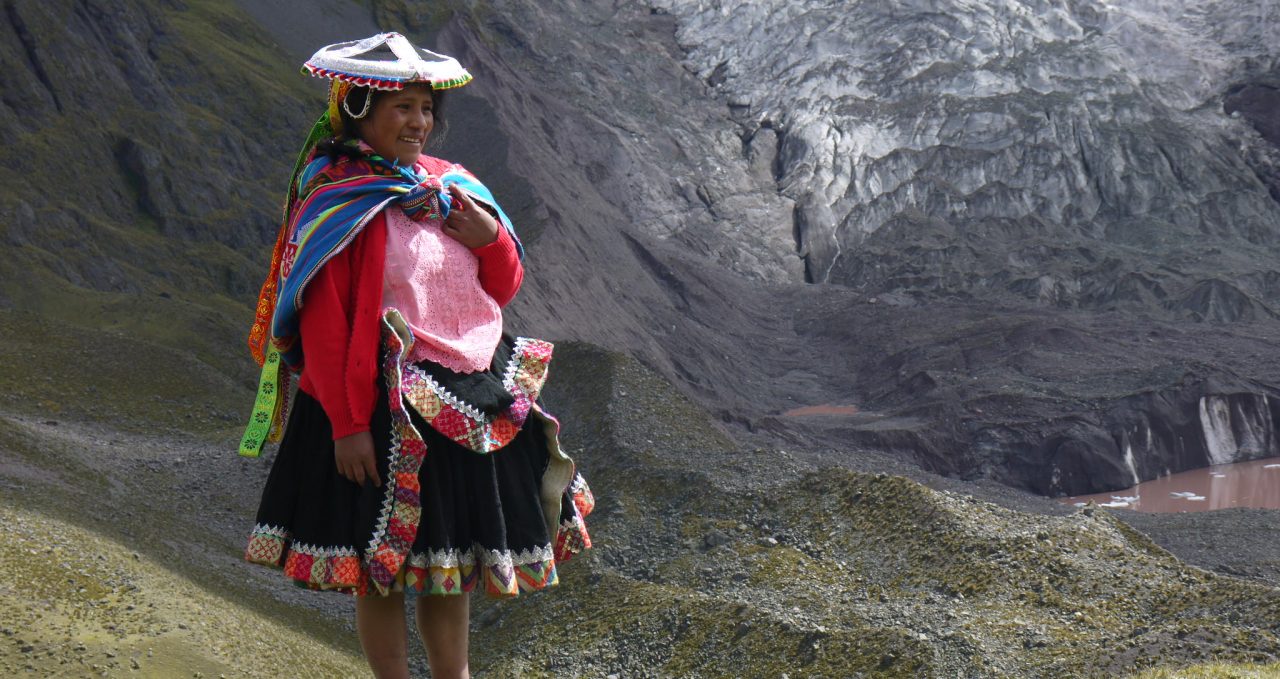
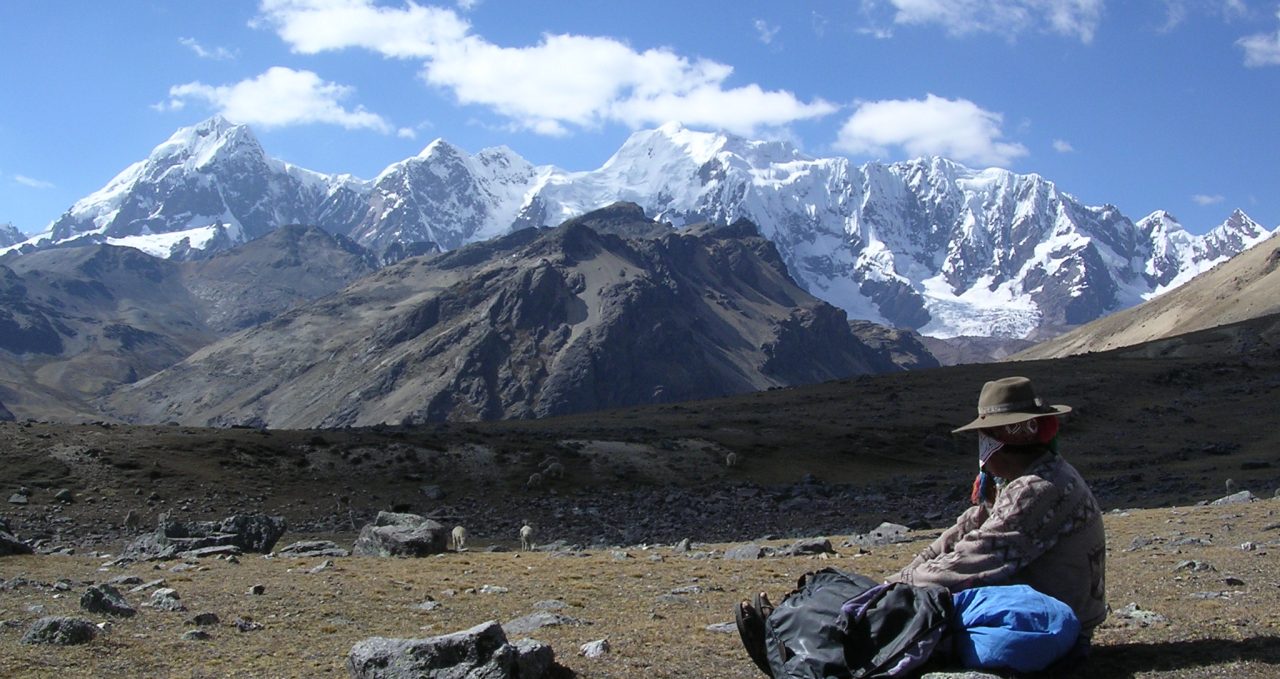
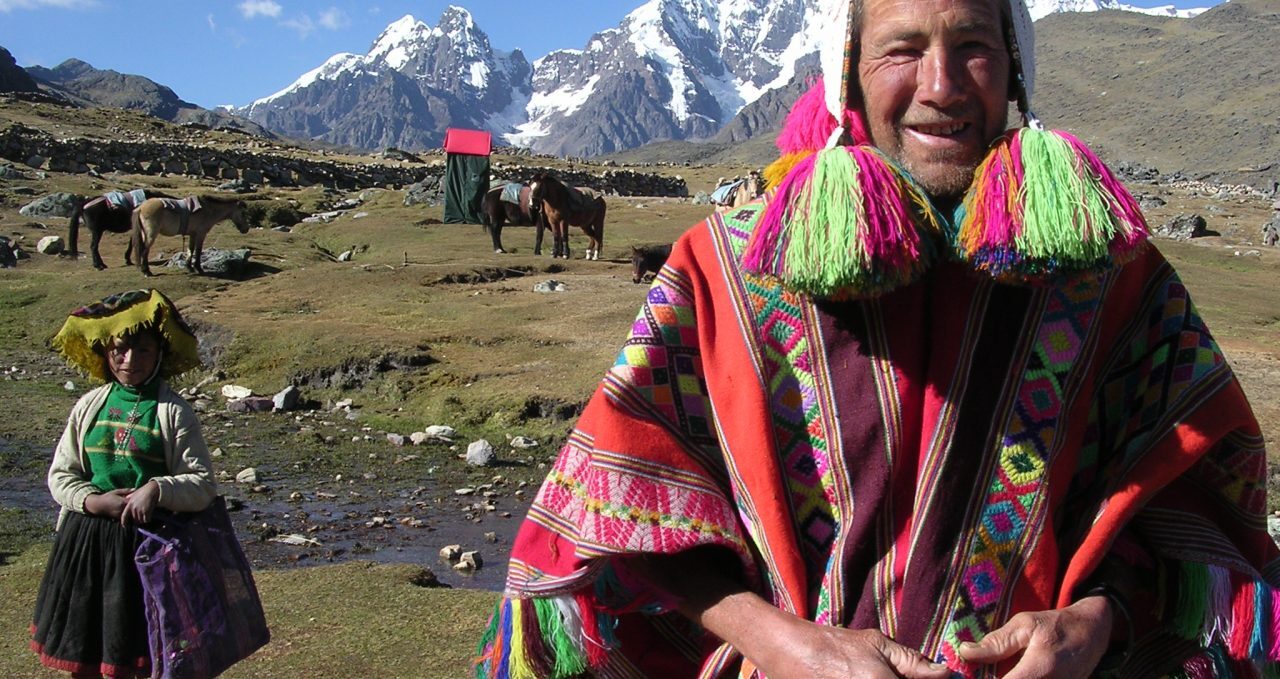
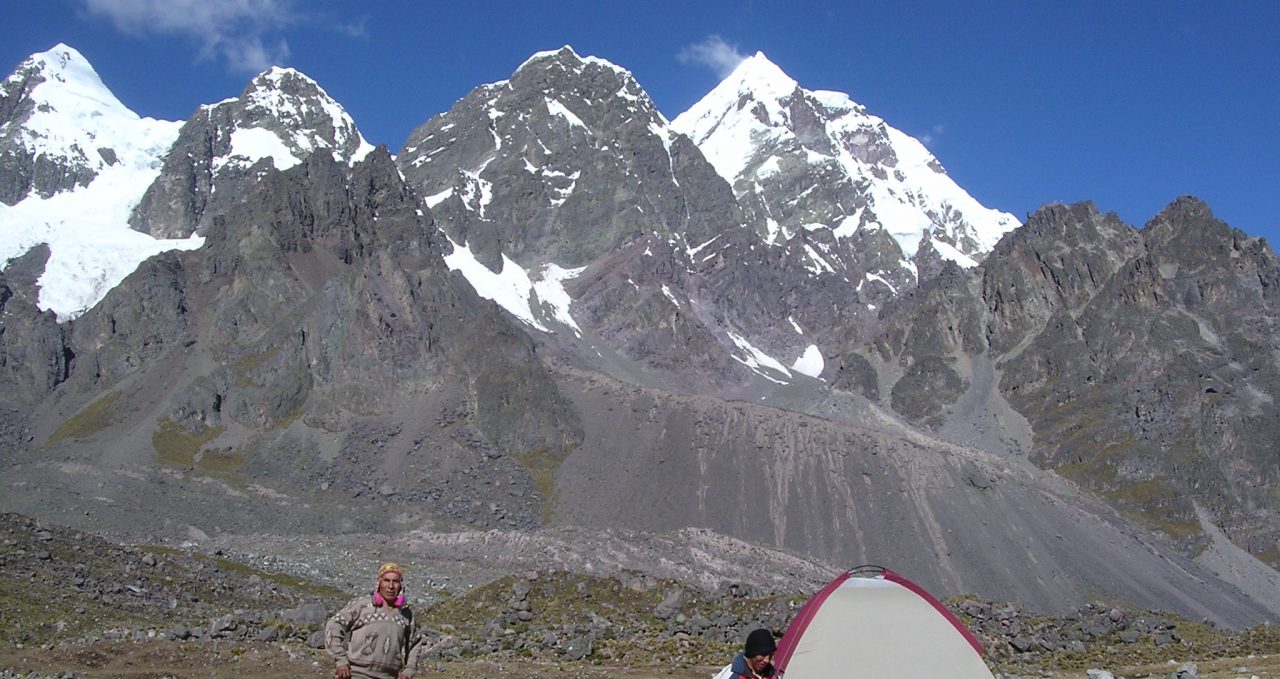
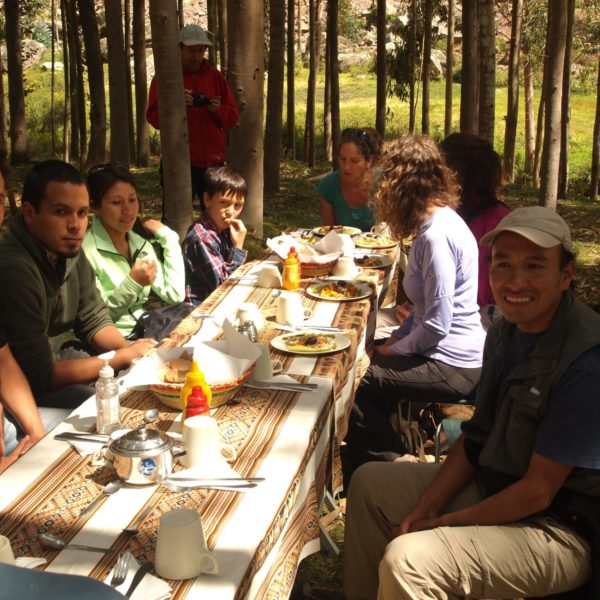
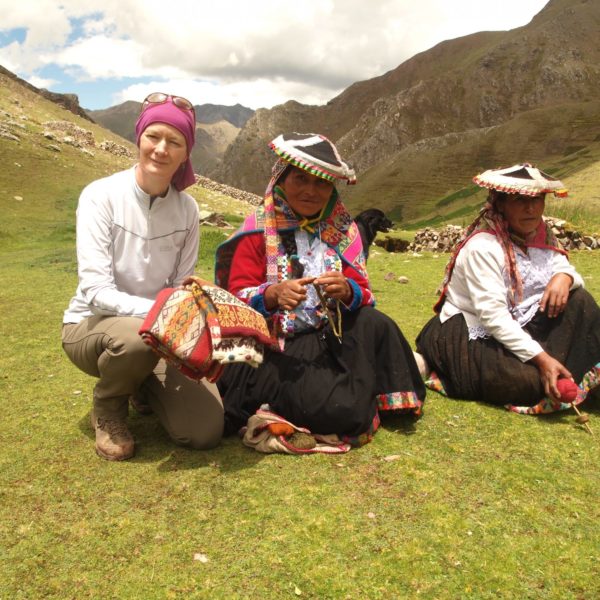
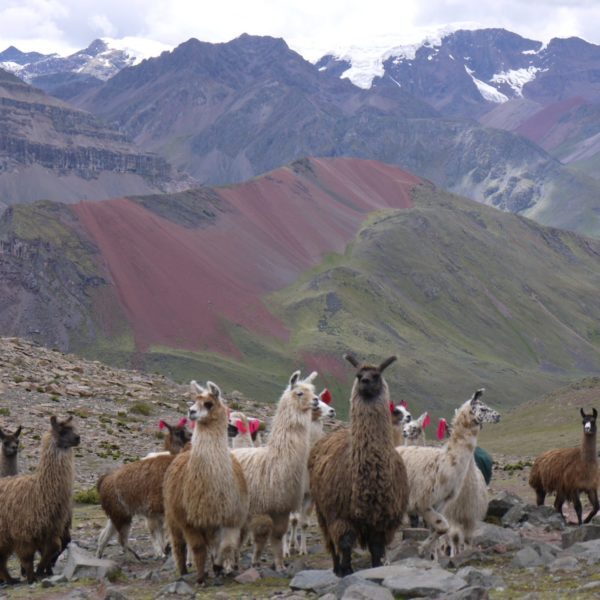
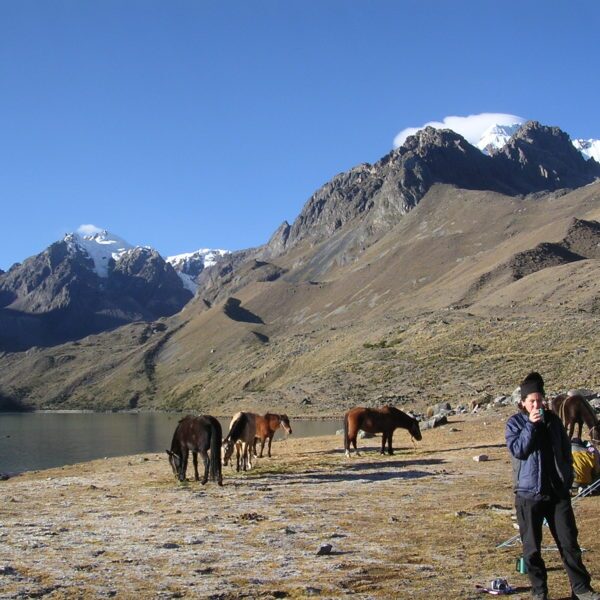
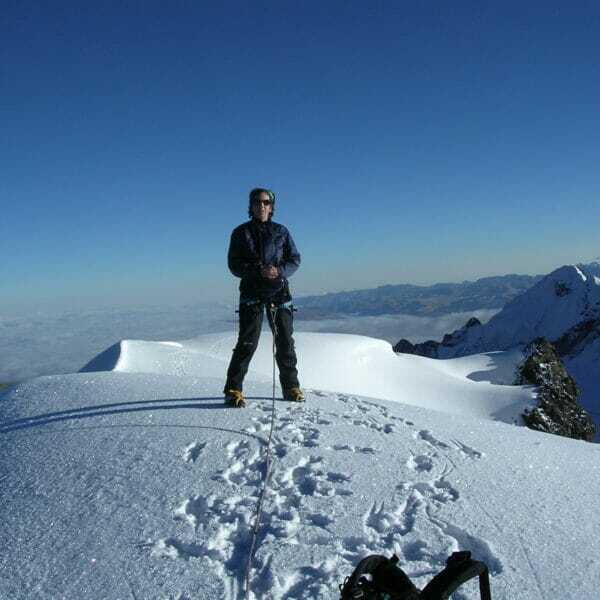
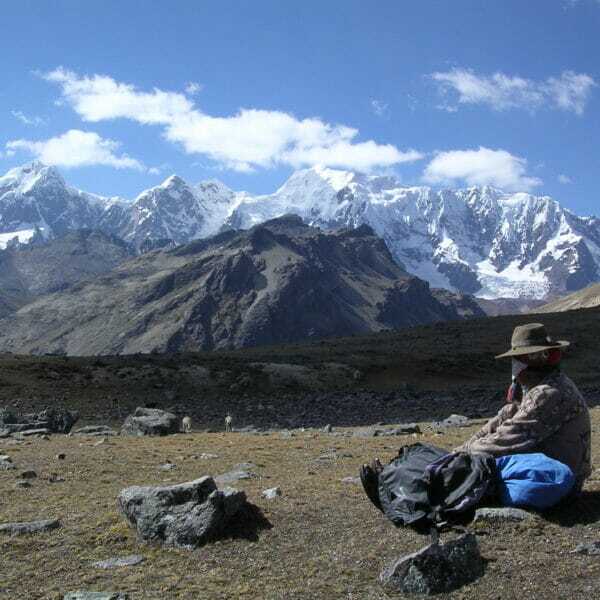
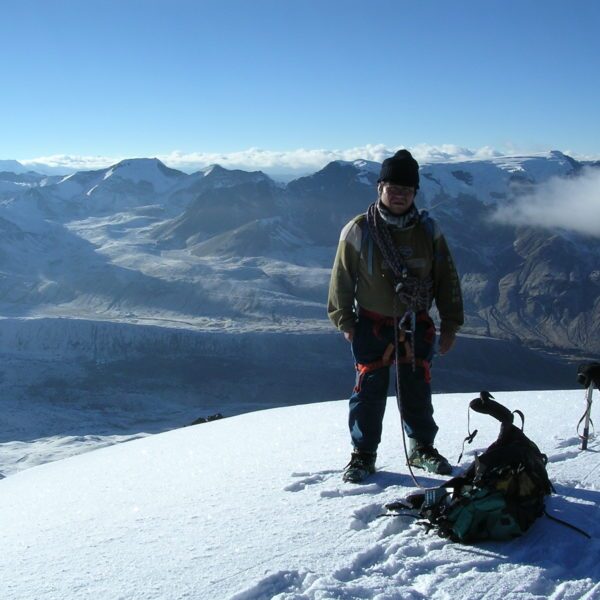
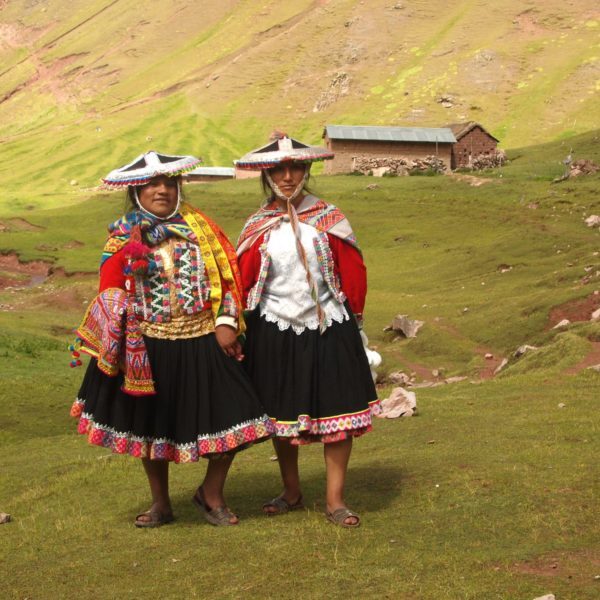
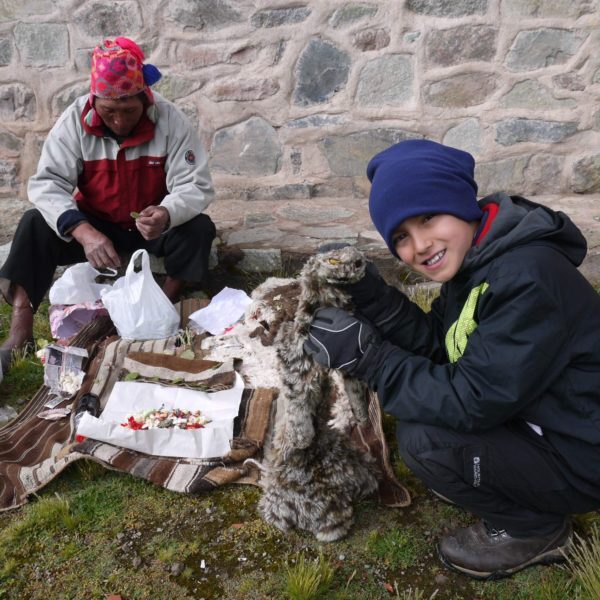
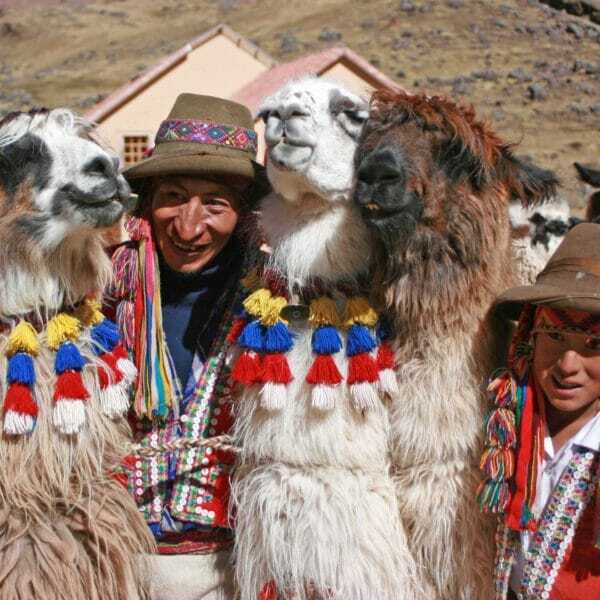
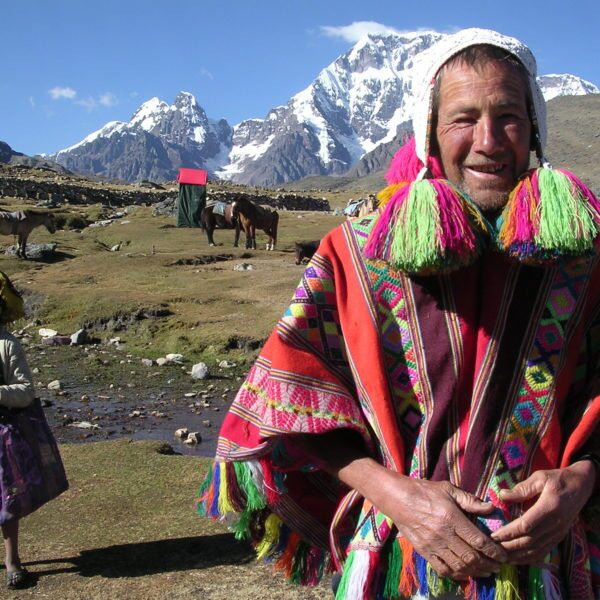
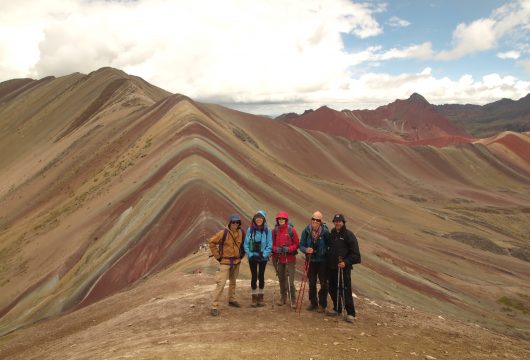
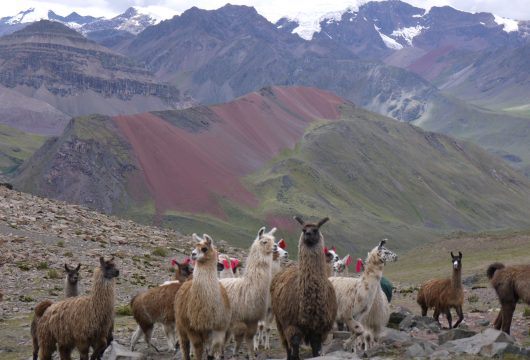
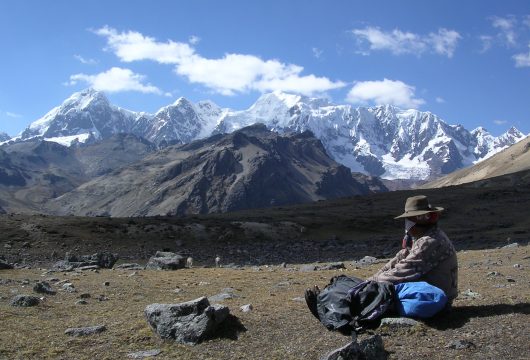
 a Group Tour
a Group Tour  a Tailor Made Tour
a Tailor Made Tour 